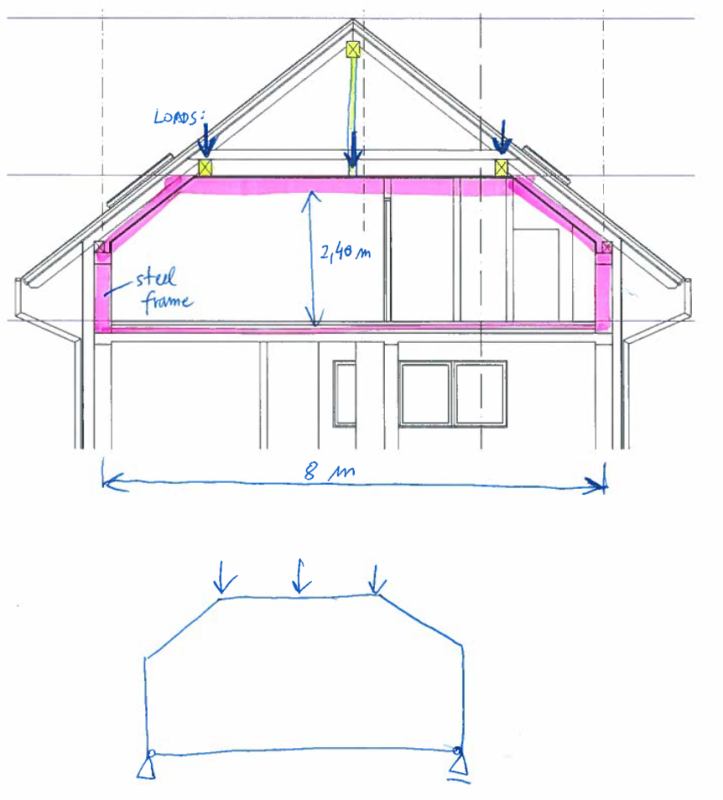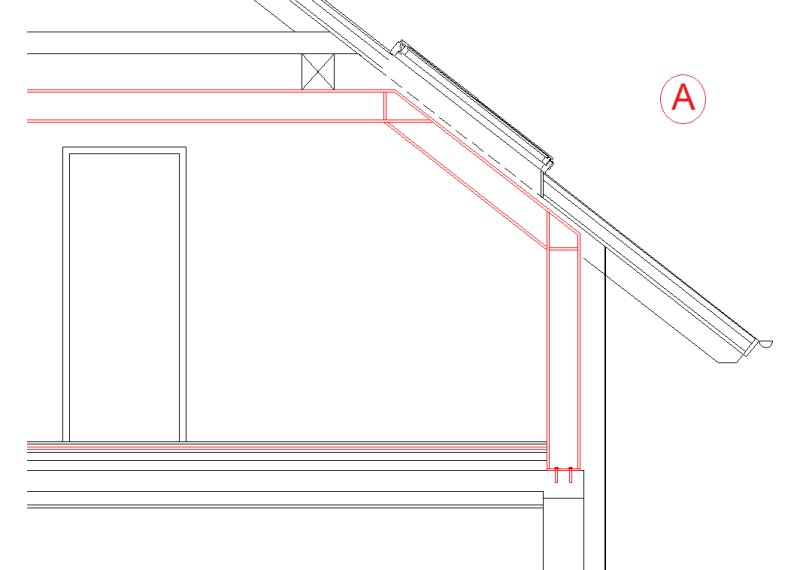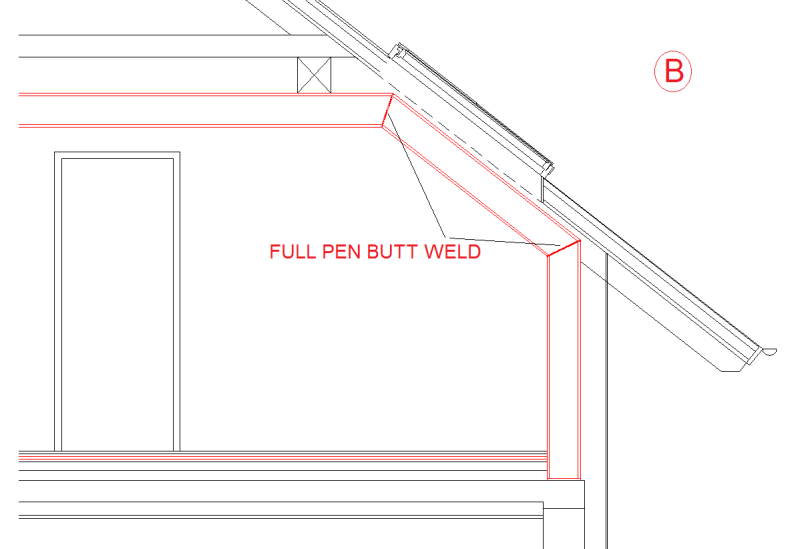greznik91
Structural
- Feb 14, 2017
- 186
Hi
Distance between masonry bearing walls at the top floor of a house is pretty large (10 m) so I have an issue with timber beams (large span for ridge and other beams that support rafters). So I have designed a steel frame that supports timber beams in the middle of bearing walls.
I have designed a tension tie at the bottom of a frame. This tie will be placed in a screed above RC slab.
What Im asking is how should I control steel beams at connections? I want to have wellded connections since I think its the easiest way to do it at a field.
I have seen an option B (diagonal cut in beam and welded with ful pen. butt weld) and option A which looks more stiff but I believe there were fillet welds.
Should I control connection right at the diagonal? Im not so sure what kind of cross section should I use when controlling a frame at connections since flanges are at angle and web is actually longer.
Sorry for bad language.





Distance between masonry bearing walls at the top floor of a house is pretty large (10 m) so I have an issue with timber beams (large span for ridge and other beams that support rafters). So I have designed a steel frame that supports timber beams in the middle of bearing walls.
I have designed a tension tie at the bottom of a frame. This tie will be placed in a screed above RC slab.
What Im asking is how should I control steel beams at connections? I want to have wellded connections since I think its the easiest way to do it at a field.
I have seen an option B (diagonal cut in beam and welded with ful pen. butt weld) and option A which looks more stiff but I believe there were fillet welds.
Should I control connection right at the diagonal? Im not so sure what kind of cross section should I use when controlling a frame at connections since flanges are at angle and web is actually longer.
Sorry for bad language.





